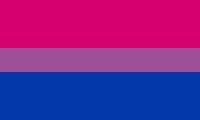
Photo from wikipedia
There is tentative evidence that infants can learn preferences through evaluative conditioning to socioemotional stimuli. However, the early development of evaluative conditioning and the factors that may explain infants' capacity… Click to show full abstract
There is tentative evidence that infants can learn preferences through evaluative conditioning to socioemotional stimuli. However, the early development of evaluative conditioning and the factors that may explain infants' capacity to learn through evaluative conditioning are not well understood. Infants (N = 319; 50.2% boys) participated in a longitudinal study where an evaluative conditioning paradigm using socioemotional stimuli was conducted on two occasions (when infants were 7 and 14 months old, on average). We tested whether repeatedly pairing neutral stimuli (triangular and square shapes) with affective stimuli (angry and happy faces) affects infants' preferences for these shapes. At both timepoints, the majority of infants did not choose the shape that was paired with happy faces, indicating that, in general, learning through evaluative conditioning was not present. However, as expected, individual differences were evident such that infants who spent more time fixating on faces compared to shapes (face-preferrers) during the conditioning trials were significantly more likely than non-face-preferrers to choose the shape paired with happy faces, and this effect strengthened with increasing age.
Journal Title: Developmental psychobiology
Year Published: 2022
Link to full text (if available)
Share on Social Media: Sign Up to like & get
recommendations!